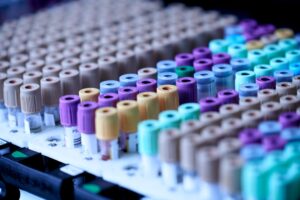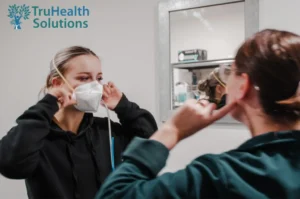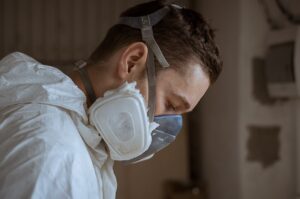Hair drug testing is a forensic toxicology method that detects drug use by analysing a small sample of hair. Unlike urine or saliva tests that capture recent substance use, hair analysis can reveal patterns of drug use over a much longer period. This extended detection window makes hair testing a powerful tool for employers, legal authorities, and safety agencies who need to review an individual’s drug history. In Australia, interest in hair drug testing has grown due to its accuracy and resilience against cheating, especially in situations like workplace safety and family law disputes.
This guide provides an in-depth look at hair drug testing in the Australian context, covering legal standards, how the science works, which drugs can be detected, comparison with urine and saliva tests, and common use cases ranging from job sites to courtrooms.
Legal and Regulatory Framework in Australia
Legality of Drug Testing
In Australia, workplace drug and alcohol testing is generally legal and is often carried out under Work Health and Safety (WHS) obligations. Employers in high-risk industries, such as mining, transportation, construction, and aviation, commonly implement testing programmes to ensure no worker is impaired on the job.
However, employers do not have an unlimited right to test at will, they must have a justified reason, such as safety or fitness for duty, and a clear drug and alcohol policy in place. Industrial courts and tribunals recognise that drug testing, especially random testing, can be an intrusion on privacy, so it is typically permitted only when safety is at stake.
In practice, this means testing policies should be developed in consultation with employees and applied consistently and fairly as a “reasonable” management action under employment law.
Hair Testing Standards
One challenge with hair drug testing in Australia is the lack of a dedicated Australian Standard for hair analysis. Unlike urine and saliva testing, which are guided by Australian Standards (AS/NZS 4308 for urine and AS/NZS 4760 for oral fluid), there is currently no Australian standard specifying cut-off levels or target drugs for hair samples.
This means each accredited laboratory may have its own validated methods and cut-off thresholds, often based on international guidelines such as those from the Society of Hair Testing. In fact, the same hair sample could yield a positive result in one lab but test negative in another if their detection thresholds differ.
Because of this variability, it is crucial that any hair test used for official purposes, such as court evidence or employment decisions, is done through a NATA-accredited laboratory following recognised international best practices. Accreditation and adherence to global standards help ensure the results are legally defensible in Australia’s regulatory environment.
Employment Law Considerations
Employers considering hair testing must balance its advantages with privacy implications. Hair tests can reveal drug use over months, including off-duty use, which Australian tribunals have sometimes deemed too invasive if it is not directly related to workplace safety.
For example, in one Fair Work Commission case, requiring urine tests, which can detect weekend drug use, was found “unjust and unreasonable,” and the employer was directed to use saliva tests instead, as saliva only detects very recent use when a worker might still be impaired.
By extension, routine hair testing of employees could face legal challenges unless it is clearly warranted, for example in safety-critical roles or as part of a rehabilitation agreement. Employers who use hair drug screening typically do so for pre-employment checks or for cause, rather than random blanket testing, and they must communicate this in their drug and alcohol policy.
It is advisable to obtain employee consent via company policy and to limit hair testing to situations where long-term drug history is truly relevant to the job role or safety requirements. In all cases, maintaining confidentiality and respecting the individual’s rights is essential to comply with privacy laws and fair work principles.
Court Admissibility
When performed by accredited labs, hair drug test results are admissible as evidence in Australian courts. They have become an accepted tool in family law proceedings to assess parental drug use over time. Courts recognise that hair analysis, with its extended window, can provide a more complete picture of someone’s substance use history than a single urine or blood test.
For instance, the Family Court may order a parent to undergo a hair follicle test if past drug use is alleged, as this can show whether the parent has remained abstinent for months before a custody hearing. Hair test reports have been used in child custody disputes, probation hearings, and coronial inquests, among others.
That said, lawyers often require that the testing process be clearly documented, including chain of custody of the hair sample, lab accreditation, and expert interpretation, to ensure the evidence holds up under scrutiny.
Overall, Australian legal standards emphasise that hair testing, like any drug test, should be conducted reliably and fairly. As long as these conditions are met, hair drug tests are a powerful tool that courts and employers can and do use within the bounds of Australian law.
Detection Window and Scientific Accuracy of Hair Testing
How Long Do Drugs Stay in Hair?
Hair drug testing is prized for its extended detection window. When a person consumes drugs, trace amounts of drug metabolites circulate in the bloodstream and get absorbed by the hair follicles. As hair grows out of the scalp, these metabolites become embedded in the hair shaft, creating a kind of timeline of drug exposure.
Head hair grows about 1 centimetre per month, so a 3 cm length of hair cut from near the scalp represents roughly the past 3 months of drug use. Laboratories commonly test a 3 cm segment as a standard to check for approximately 90 days of history. If a longer history is needed, longer hair can be analysed. For example, a 6 cm segment could reflect around 6 months, and some tests even examine up to 12 cm (about a year) of growth for a very extended view.
In cases where head hair is not available, due to baldness or shaving, testers might use body hair from the chest, arm, leg, and so on. Body hair grows at a slower and somewhat irregular rate, but it can still retain drug traces. It often provides a general history of up to 6 to 12 months, though without the precise month-by-month timeline that head hair can offer.
One key point is that hair testing does not detect current impairment or very recent drug use. It typically takes about 7 to 10 days after drug use for the affected hair to grow out of the scalp where it can be cut and tested. In other words, if someone used a drug yesterday, a hair test today would likely still be negative. Hair testing is therefore unsuited for detecting spur-of-the-moment use or determining if someone is under the influence at the time of testing.
Accuracy and Reliability
When performed properly, hair drug testing is highly accurate and difficult to cheat. Hair samples are usually sent to specialised laboratories where they undergo sensitive analysis, often starting with an immunoassay screen and confirmed by GC-MS/MS (gas chromatography-mass spectrometry) for definitive results. These techniques can identify specific drug molecules embedded in the hair with a high degree of certainty, minimising false positives.
One advantage is that hair samples are observably collected, as a small lock of hair is cut under supervision, so there is no realistic way for a donor to adulterate or substitute the sample as can happen with urine. The chemicals locked inside the hair are also stable over time. Drugs do not “evaporate” or chemically degrade quickly in the hair matrix, which means the evidence of use remains even months later. This stability allows retesting of the same sample if needed for verification.
Moreover, hair testing is known for its resistance to tampering. You cannot simply wash out the drugs with special shampoos or bleach and expect to pass. Laboratories typically wash hair samples and use wash analysis to account for any external contamination before testing the interior of the hair shaft. These safeguards make it extremely hard for someone to cheat a hair drug test, contributing to the method’s reputation for reliability in high-stakes situations.
Limitations
Despite its strengths, hair testing has a few important limitations. First, as noted, it will not show very recent use. There is roughly a one to two-week gap after ingestion before drugs become detectable in new hair growth. If an employer or official needs to know if someone used a drug yesterday or last weekend, a hair test is not the appropriate tool.
Second, hair testing may not catch very infrequent or low-level drug use. If someone only uses a drug once in a great while, the drug may or may not deposit in the hair at levels above the laboratory’s cut-off threshold. For instance, a single experimental use might go undetected, whereas repeated use will almost certainly show up.
The sensitivity can also be affected by hair length. A very short sample, say less than 1 cm, might yield less information. Another consideration is biological differences. Hair colour and texture can influence drug binding, for example, darker hair with more melanin can bind certain drug metabolites more strongly, although labs calibrate methods to account for this as much as possible.
Finally, some people view the hair collection process as mildly invasive or culturally sensitive. While it is not invasive in a medical sense, as no needles or urination is required, it does involve cutting a small amount of hair, which might be problematic if someone has very short hair or has religious or cultural reasons to avoid hair cutting. Generally, only a small lock, about the width of a pencil lead, is cut, often from an inconspicuous spot, but it is still something to consider.
Overall, when weighed against urine and saliva tests, hair analysis provides unparalleled insight into long-term drug use with very high accuracy, but it is not a catch-all solution for every scenario.
Drugs Detected by Hair Testing
Hair drug tests can detect a wide range of illicit and prescription drugs with high accuracy. Essentially, any drug that enters the bloodstream and has chemical stability can potentially be traced in hair. Australian hair testing panels typically focus on the major drugs of abuse that are common in the community or of concern to workplaces and courts.
Cannabis (THC)
Hair tests look for THC metabolites, such as THC-COOH, embedded in the hair to indicate marijuana use. Cannabis is one of the trickier substances to detect in hair, since less of THC’s metabolite is deposited in hair compared to other drugs. However, regular cannabis use will reliably show up in a hair analysis. Detection in hair generally reflects moderate to heavy use, while occasional cannabis use might be below detection thresholds.
Amphetamines and Methamphetamines
This category covers stimulant drugs such as amphetamine, for example prescription dexamphetamine, methamphetamine (ice or speed), and MDMA (ecstasy). Hair testing is very effective at catching these stimulants. Methamphetamine, for instance, incorporates readily into hair and can be identified even weeks or months after use. Given the prevalence of methamphetamine, or “ice”, in some parts of Australia, hair tests are a useful tool to demonstrate abstinence from this drug over time.
Cocaine
Cocaine and its metabolites, such as benzoylecgonine, bind strongly to hair melanin, making cocaine use quite detectable via hair testing. Even a single use of cocaine might be picked up, and chronic use will definitely register. Hair tests for cocaine are valuable in legal contexts, as cocaine has a shorter detection window in urine, but in hair it can be found long afterwards.
Opiates and Opioids
These include heroin, which shows up as its metabolite 6-monoacetylmorphine (6-MAM) and morphine, as well as codeine, oxycodone, and other opioid painkillers. Hair tests can distinguish heroin use from codeine use if the 6-MAM metabolite is present, as 6-MAM only comes from heroin. Opiates are usually incorporated into hair well, so a history of heroin or heavy opioid use will be evident. This is particularly useful for monitoring someone with a past opioid addiction, as a clean hair test can verify they have not relapsed during the tested period.
Benzodiazepines
Drugs like diazepam, temazepam, alprazolam, and other tranquilizers can also be detected in hair if the test is designed for it. They may not be on every standard panel, but many labs offer benzodiazepine screening, especially if prescription drug misuse is of concern. This might be relevant in cases involving impaired healthcare professionals or drivers. Benzodiazepines tend to stay in hair similar to other drugs, giving a months-long view of use.
Other Drugs
Many other substances can be tested in hair with specialised methods. For instance, phencyclidine (PCP) is often included in United States panels, although PCP use is extremely rare in Australia. Some labs can test for synthetic cannabinoids, hallucinogens like LSD, or newer psychoactive substances if needed. These are special requests and not part of routine testing due to complexity and cost.
Alcohol is another substance of interest. While alcohol itself is not deposited in hair, a metabolite called ethyl glucuronide (EtG) can be detected in hair to reveal chronic excessive alcohol consumption. Hair alcohol tests have been used in Australia to monitor abstinence in drink driving offenders or in child custody matters where alcohol abuse is a concern. An EtG hair test typically looks at the past 3 months, using a 3 cm segment, to determine whether the person has been regularly drinking heavily, rather than being abstinent or only an occasional drinker.
Testing Panels and Laboratory Variation
It is important to note that because there is no fixed national standard for hair testing, the exact drug panel and cut-off levels can vary by laboratory. However, any reputable testing service will disclose what drugs they screen for and their detection thresholds. In general, the panels are designed to detect the substances most relevant to Australian workplaces and courts. This typically means the well-known illicit drugs and commonly misused prescription medications.
If a specific drug is of concern, such as a lesser-known synthetic substance in a particular case, arrangements can usually be made with the lab to include it. The bottom line is that hair testing offers broad coverage of drugs. If a person has been using any of the common drugs of abuse, a properly conducted hair analysis is very likely to detect it.
Hair Testing vs. Urine and Saliva Testing: Pros and Cons
Drug screening can be done with various biological samples, each with its own strengths and weaknesses. The main alternatives to hair are urine tests, the traditional method in many workplaces, and saliva or oral fluid tests, often used for roadside testing and some workplace programs. Below is a comparison of hair testing with these methods, highlighting key differences.
Detection Window
This is the most notable difference. A hair test has by far the longest look-back period, it can uncover drug use that occurred months ago. Urine tests have an intermediate window, typically detecting drug use from a few days up to about a week prior, although heavy cannabis use can sometimes be detected for two to three or more weeks. Saliva tests have the shortest window, often only detecting use within the last 24 to 48 hours for most drugs.
For example, one Australian report summarised it as: saliva picks up recent use, within hours to a day, urine covers the past one to eight days, and hair can potentially show use up to three to six months back. This means hair testing is ideal for identifying long-term or habitual substance use, while saliva is best for identifying immediate or very recent impairment.
Invasiveness and Convenience
Hair sample collection is relatively easy and non-invasive, a tester simply snips a small lock of hair, and the person being tested can observe the process. There is no need for special facilities like bathrooms or same-gender collectors, as with urine.
Urine testing, by contrast, can be invasive or uncomfortable because it requires the donor to provide a sample, often under supervision to prevent tampering, which can feel like an affront to privacy.
Saliva testing is also minimally invasive, usually involving a swab of the mouth or the donor drooling into a collection device. Many people find saliva testing the least embarrassing method since it does not involve cutting hair or handling bodily fluids.
From an operational standpoint, saliva and urine are quicker for on-the-spot screening, as there are instant immunoassay kits that give rapid results. Hair samples, however, must be sent to a laboratory, as there is currently no true instant hair test device. Thus, saliva and urine are often used when immediate results are needed, such as in roadside drug tests.
Susceptibility to Cheating
Hair testing is generally considered the hardest to cheat. Because the sample is cut directly from the person, there is virtually no way to substitute someone else’s hair or adulterate the sample without detection. Attempts to cleanse the hair using special shampoos or chemicals are mostly ineffective, as lab protocols include washing the hair and testing for external contaminants.
Urine testing is more vulnerable to tampering. People may try to dilute their sample, use synthetic or borrowed urine, or add substances to mask drugs. Collectors mitigate this by supervising the collection, checking temperature, and using adulteration test strips, but cheating is still possible in unsupervised settings.
Saliva tests are more secure than urine in this regard, as it is harder to fake saliva. However, people have attempted to use mouthwashes or other products shortly before testing to reduce detectable levels. Despite this, saliva testing is generally effective, especially when conducted in person.
Accuracy and Sensitivity
All three methods can achieve a high level of accuracy when laboratory confirmation is used. False positives are rare with lab-based tests, which confirm results using advanced techniques.
Hair tests have high specificity and sensitivity for chronic drug use, but may be less sensitive to one-off or infrequent use. Urine tests are highly sensitive to recent use and will often detect even a single instance of drug use within the detection window. This can be a benefit or drawback depending on the testing policy.
Saliva tests excel at detecting drugs taken in the last day or so. For substances like cannabis, saliva is particularly good at indicating recent use or impairment, as THC remains in saliva only while a person is under the influence or shortly thereafter.
Saliva testing technology has significantly improved in recent years. The current Australian Standard for oral fluid testing (AS/NZS 4760:2019) addresses past issues such as inconsistent detection of THC. Today, all three methods are accurate when matched to their appropriate use case — hair for long-term patterns, urine for recent use, and saliva for immediate impairment.
No single method is flawless, but when used together they can cover each other’s limitations. For example, some workplaces use saliva for daily impairment checks and reserve hair testing for pre-employment or follow-up assessments.
Turnaround Time and Cost
Hair testing is the most resource-intensive method. Samples must be couriered to a specialist lab and go through detailed analysis. Results typically take about a week, though timelines vary depending on location and laboratory availability. Hair tests are also the most expensive, often costing several hundred dollars each.
Urine testing is faster and more affordable. On-site tests can return results within minutes, and lab confirmations are usually available within 24 to 48 hours. The cost per urine test, especially with bulk kits, can be as low as a few dozen dollars.
Saliva testing also offers rapid on-site results, with lab confirmation in a day or two if needed. Costs are similar to, or slightly higher than, urine testing due to newer technology, but still much lower than hair testing.
For employers, speed and cost are critical factors. Hair testing is often too expensive and slow for regular random testing, but valuable for thorough vetting or high-risk roles. Urine and saliva are more practical for routine or large-scale testing.
Summary
Choosing between hair, urine, and saliva drug testing depends on the objective:
-
Hair testing is best for verifying long-term patterns of use or abstinence, such as in pre-employment checks or family court matters.
-
Urine testing is ideal for detecting recent use within the past week and is widely used due to its affordability and availability.
-
Saliva testing is the preferred method when assessing current impairment or very recent use, especially in safety-critical roles or roadside screening.
Often, a combination of methods is used in Australia. For instance, employers may use saliva for on-site checks and hair or urine testing for more detailed analysis. Understanding the strengths and weaknesses of each method ensures the right testing tool is used for the right purpose — whether that’s ensuring safety, maintaining fairness, or verifying a substance use history.
Common Use Cases for Hair Drug Testing in Australia
Hair drug testing fills particular niches in Australia where its unique properties are especially valuable.
Workplace Testing (Safety-Sensitive Roles)
In workplaces where safety is paramount and any drug use is a serious concern, hair testing is sometimes used to enforce a strictly drug-free workforce. Examples include aviation personnel, rail and transport operators, mining and heavy machinery operators, and police or correctional officers.
In these environments, drug use even during off-hours can pose risks on the job, so employers may opt for hair screening at the hiring stage or periodically. A hair test can reveal if a new hire has a habit of drug use that they have not disclosed. Some companies use hair tests for pre-employment screening as a form of lifestyle audit, providing insight into drug use over the preceding months. This can be an effective filter for roles that demand high trust and safety.
Hair tests are also used in “for cause” situations, for instance when an employee in a sensitive position has a known history of drug issues and the employer requires proof of sustained abstinence before allowing them back on duty.
While it is less common to use hair testing for random blanket testing of an entire workforce due to cost and privacy concerns, some employers have used it in combination with urine or saliva testing. Hair testing is valued in high-risk industries for its resistance to tampering and its ability to detect chronic drug use that periodic urine tests may miss.
Any workplace using hair testing typically outlines this in its drug and alcohol policy and ensures employees understand the rationale, often citing the critical safety implications. In most cases, only certain positions, such as drivers or operators, are subject to hair testing. Employers should also have a process in place to manage positive results, which may include a confirmation step, opportunity for employee response, and appropriate disciplinary or support measures.
Legal and Court-Mandated Testing
One of the most prevalent uses of hair drug testing in Australia is in the Family Court and child protection proceedings. Family law matters that involve allegations of drug use by a parent often rely on hair test results to inform custody or visitation decisions. The court may order a parent to undergo a hair drug test when there are concerns about child safety.
Because hair tests can demonstrate a pattern of abstinence or use over several months, they are useful to judges who need to determine whether a parent has genuinely stopped using drugs during a supervised access period. A negative hair test covering the last three months can provide powerful evidence of sobriety, while a positive result can corroborate ongoing drug use. Hair testing in family court can detect both illicit drugs and excessive alcohol use, using EtG (ethyl glucuronide) testing.
Outside of family law, hair testing also appears in other legal contexts. Some child welfare agencies and Children’s Courts have used hair testing for caregivers in serious matters, although due to the lack of Australian standards, urine testing is usually preferred unless hair testing is specifically authorised. Drug diversion programs and parole or probation conditions may include hair testing, especially in cases requiring periodic proof of abstinence.
Hair testing is also used in disciplinary or internal monitoring programs for professionals such as doctors, nurses, and police officers. For example, a doctor returning to work after treatment for addiction might undergo regular hair testing as part of their reinstatement agreement.
Australian courts have generally accepted hair test results as reliable when conducted by an accredited lab and accompanied by proper documentation. Legal use of hair testing has expanded as more lawyers and judges recognise its benefits in demonstrating long-term patterns of drug or alcohol use.
Return-to-Work and Rehabilitation Programs
Hair drug testing is also used to monitor individuals in recovery or under conditions requiring proof of abstinence. This may overlap with both workplace and court-related contexts.
For example, an employee removed from duty due to a failed drug test may be required to pass a hair test before being cleared to return to work. In regulated professions such as aviation or healthcare, individuals with past infractions may undergo scheduled hair testing as part of their rehabilitation or compliance obligations.
Hair testing is useful in these contexts because it provides a long-term view without requiring frequent testing. A test every few months is often sufficient to demonstrate sustained abstinence.
Drug rehabilitation clinics may use hair testing at the intake stage to understand what substances were recently used and to what extent. Follow-up tests can verify that the individual has remained drug-free throughout treatment. While hair tests do not show precise quantities, a strong positive may suggest chronic or heavy use. Follow-up results offer a more comprehensive picture than a single urine test, which might miss a relapse depending on timing.
In some cases, individuals or families seek hair testing for personal reasons, such as concerned parents testing a teenager, or individuals checking themselves prior to job applications.
Hair testing also finds use in health research and community studies. For example, researchers have tested prison populations to study drug use trends, using hair samples to assess long-term exposure and inform policy responses.
General Workplace Health and Safety Screening
Even outside of high-risk industries, organisations promoting a drug-free culture may choose hair testing in specific cases. For instance, a corporate employer may require executive candidates to pass a hair drug test, reflecting the high standards expected of leadership positions.
Some companies incorporate hair testing into employee assistance or wellness programs. This is not used in a disciplinary way, but rather to support employees who are recovering from substance misuse, allowing them to voluntarily demonstrate abstinence.
It is important to note that Australian WHS laws do not mandate drug testing, but nor do they prohibit it. The responsibility lies with employers to manage risk. In situations where an incident has occurred, a hair test may help identify whether substance use was an underlying factor. For example, if a post-incident urine test is negative, a follow-up hair test may still reveal a longer-term pattern of drug use.
Conclusion
Hair drug testing in Australia is a specialised but highly valuable tool. It is especially effective in situations where long-term drug use history is relevant — such as verifying employee sobriety in safety-critical roles, resolving disputes in family court, or monitoring recovery in rehabilitation and return-to-work programs.
While not as commonly used as urine or saliva tests due to cost and turnaround time, hair testing offers unmatched insight into chronic substance use. As awareness grows and testing technologies advance, its role in Australian workplace and legal practices is likely to expand. When used appropriately, and with respect for privacy and fairness, hair testing plays a key role in promoting health, safety, and accountability.









